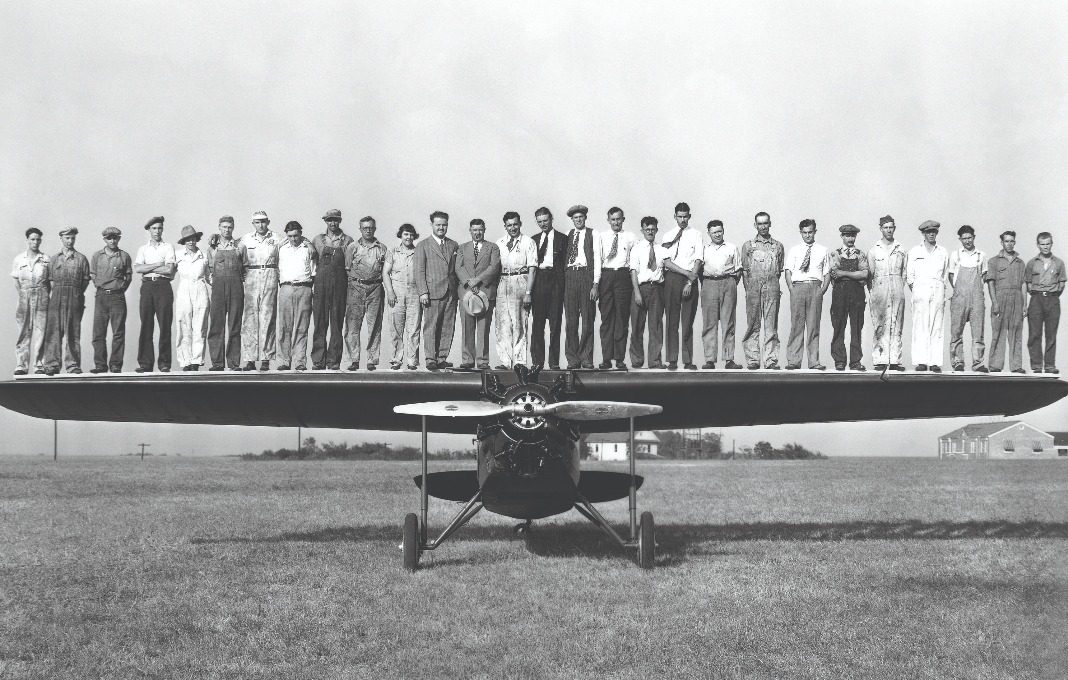
Companies Of A Century: How Textron Spun Yarn Into New Opportunities


Editor’s Note: Chief Executive is kicking off a new annual tradition this year by celebrating every sizable (over $100 million in annual revenues) standalone company turning 100 in 2023. Check out the rest of this year’s class for tips, insights and, above all else, the inspiration you need to keep going….and going.
HQ: Providence, Rhode Island
Revenues: $12.9 billion
Employees: 34,000+
Few century-old businesses boast a metamorphosis over the decades as extraordinary as that of Textron, a maker of synthetic yarns at its birth, and today one of the world’s leading aerospace and defense companies. The thread that weaves through its remarkable evolution is innovation.
Royal Little founded the then-Boston-based company in 1923 as Special Yarns Corp., which dyed and processed yarns for New England’s textile industry. Five years later, he acquired competitor Franklin Rayon, assumed the name of the business and added a plant in Providence, Rhode Island, which remains Textron’s headquarters today.
When Little learned that a million parachutes would be needed by the armed services in World War II, he, well, jumped. “Going into parachutes seemed like a reasonable idea, although none of us knew anything about running sewing machines or making chutes,” he said.
They learned quickly. Little tested his nylon parachute by strapping it on and jumping out of a plane. He survived and renamed the business Atlantic Parachute Company. After the war, when demand for parachutes declined, Little pivoted into making clothing and home goods. For marketing purposes, the name was changed to Textron.
In the booming 1950s, Textron embarked on an acquisition spree turning it into a multi-industry company that sold fasteners, eyeglasses, chainsaws, camshafts and electronic devices, among many others. By the end of the decade, two dozen non-textile companies had been acquired, a few in the aerospace and defense industry, a sign of what was to come.
In 1960, Bell Aircraft, a maker of rocket engines and helicopters, was added to Textron’s brands. Bell Aerosystem’s Agena rocket engine was crucial in the successful orbiting of the Ranger spacecraft toward the moon in 1961. Two years later, Textron sold its textile division.
Nine divisions of the company played a role in the historic Apollo 11 flight and landing on the moon in 1969. Aerospace buoyed Textron through the 1980s, a period marked by several firsts, like the development of the airline industry’s Beacon Collision Avoidance System, used on regular commercial flights.
Upon Textron’s largest acquisition, AVCO, in 1984, the company became a leading provider to the defense sector. Other acquisitions through the present time include Cessna and Beechcraft, two iconic makers of commercial business jets, with an installed customer base of 150,000 airplanes worldwide; United Industrial, strengthening Textron’s position as a provider of unmanned aircraft systems, ground control stations and armored security vehicles; and Howe & Howe, a leader in advanced robotic land vehicles and technologies.
As the company celebrates its centennial this year, ceaseless innovation remains its hallmark. “We’re proud of our legacy of innovation,” says Scott Donnelly, chair and CEO of Textron. “We’ve built a company recognized for its pioneering technologies, groundbreaking products and powerful brands.
“While we’re proud of our accomplishments,” Donnelly adds, “we’re focused on our future, as we continue to make the investments that will create new opportunities for growth.”




0

1:00 - 5:00 pm
Over 70% of Executives Surveyed Agree: Many Strategic Planning Efforts Lack Systematic Approach Tips for Enhancing Your Strategic Planning Process
Executives expressed frustration with their current strategic planning process. Issues include:
Steve Rutan and Denise Harrison have put together an afternoon workshop that will provide the tools you need to address these concerns. They have worked with hundreds of executives to develop a systematic approach that will enable your team to make better decisions during strategic planning. Steve and Denise will walk you through exercises for prioritizing your lists and steps that will reset and reinvigorate your process. This will be a hands-on workshop that will enable you to think about your business as you use the tools that are being presented. If you are ready for a Strategic Planning tune-up, select this workshop in your registration form. The additional fee of $695 will be added to your total.

2:00 - 5:00 pm
Female leaders face the same issues all leaders do, but they often face additional challenges too. In this peer session, we will facilitate a discussion of best practices and how to overcome common barriers to help women leaders be more effective within and outside their organizations.
Limited space available.

10:30 - 5:00 pm
General’s Retreat at Hermitage Golf Course
Sponsored by UBS
General’s Retreat, built in 1986 with architect Gary Roger Baird, has been voted the “Best Golf Course in Nashville” and is a “must play” when visiting the Nashville, Tennessee area. With the beautiful setting along the Cumberland River, golfers of all capabilities will thoroughly enjoy the golf, scenery and hospitality.
The golf outing fee includes transportation to and from the hotel, greens/cart fees, use of practice facilities, and boxed lunch. The bus will leave the hotel at 10:30 am for a noon shotgun start and return to the hotel after the cocktail reception following the completion of the round.